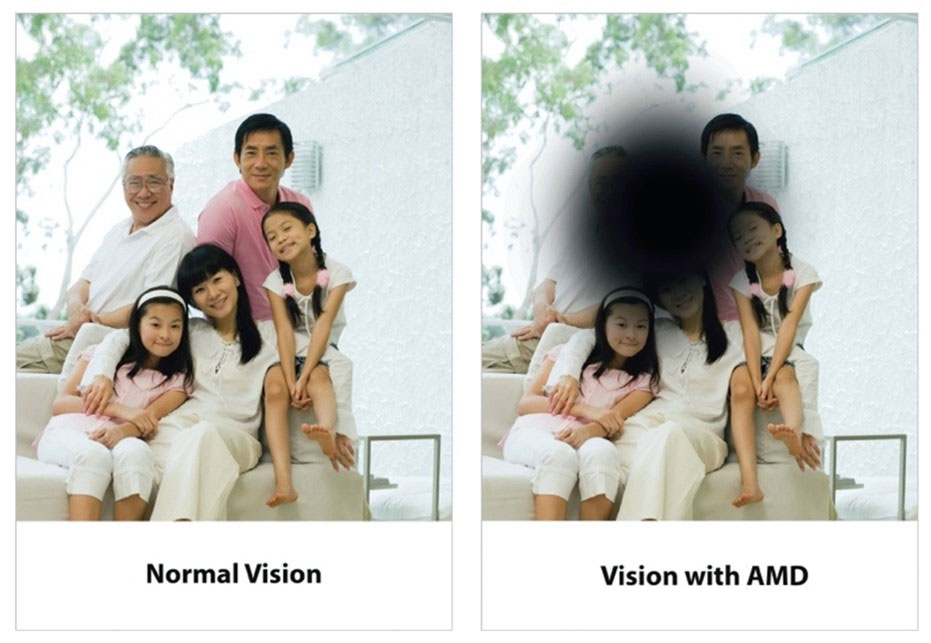Age-related macular degeneration
The macula is the central portion of the retina responsible for clarity and sharpness of vision. The macula may degenerate as one gets older; age-related macular degeneration (AMD) is one of the primary causes of irreversible sight loss in those over the age of 60.

AMD can be broadly classified as:
1 / Non-exudative or Dry AMD
This is the most common type of AMD, making up 90% of cases. In such cases, the nerve function deteriorates slowly and gradually.
2 / Exudative or Wet AMD
This accounts for 10% of AMD cases and can result in irreversible vision loss. In certain cases, good vision might be gone in a matter of days. It is caused by the formation of aberrant leaky veins or a membrane beneath the retinal layer. These aberrant arteries have the potential to bleed or leak liquids, proteins, or lipids. This can result in retinal layer separation and loss of vision. Scarring over the macula may result in the latter stages.
This makes up 10% of AMD cases and can cause vision loss that cannot be reversed. In some cases, good eyesight could be gone in just a few days. It is caused by the formation of aberrant leaky veins or a membrane beneath the retinal layer. These abnormal arteries could bleed or leak fluids, proteins, or lipids. This can cause the retinal layers to separate, which can lead to blindness. In the last stages, scarring may form over the macula.



Symptoms
Dry AMD can cause a loss of central vision that gets worse over time. People may not know they have this until the disease has gotten so bad that their central vision is blurry or distorted.
Wet AMD can cause you to lose your sight quickly and in a significant way. There may also be blurred vision or a shadow in the middle of the field of vision. Loss of sight can be very serious.
